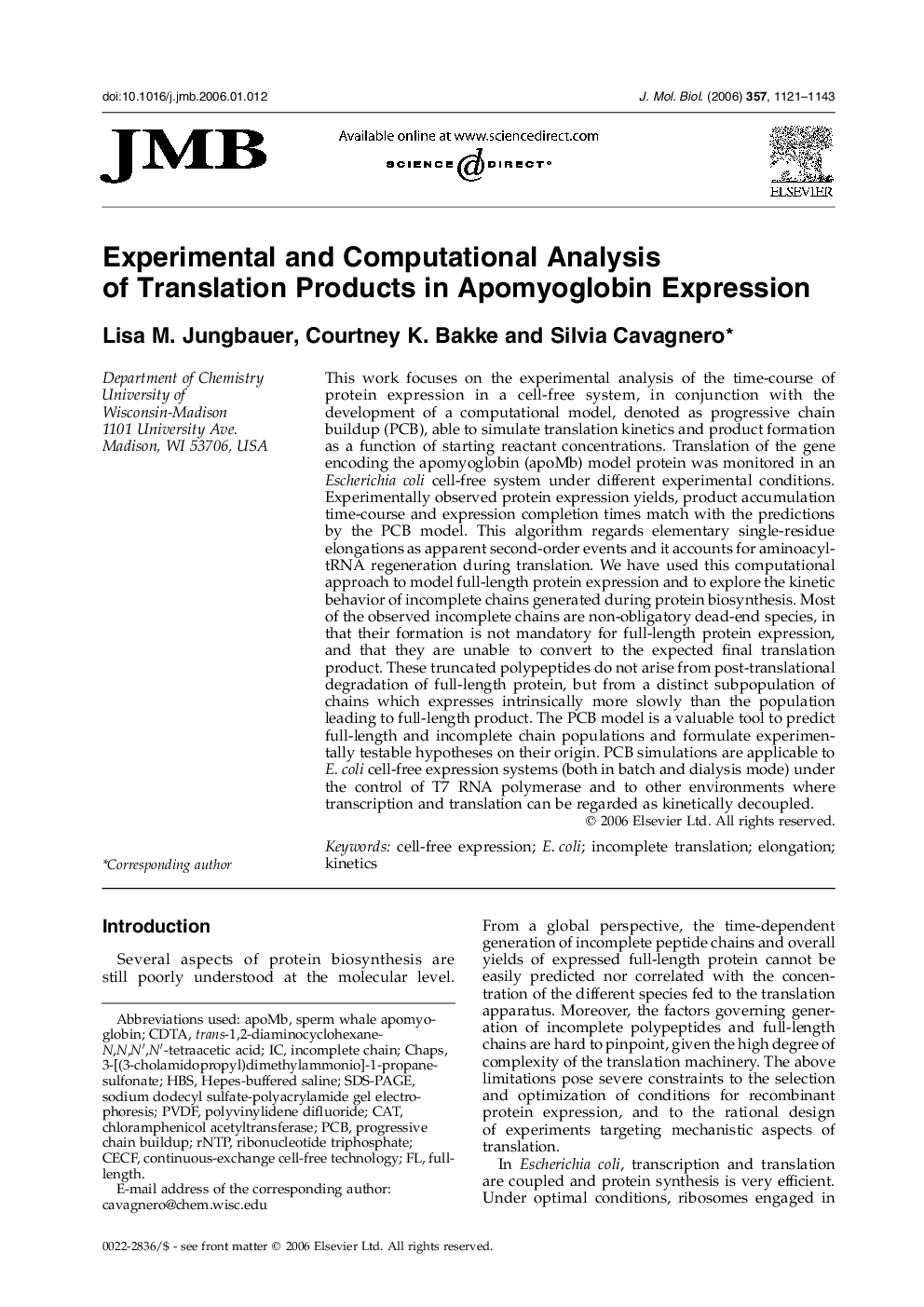| Article ID | Journal | Published Year | Pages | File Type |
|---|---|---|---|---|
| 2189939 | Journal of Molecular Biology | 2006 | 23 Pages |
This work focuses on the experimental analysis of the time-course of protein expression in a cell-free system, in conjunction with the development of a computational model, denoted as progressive chain buildup (PCB), able to simulate translation kinetics and product formation as a function of starting reactant concentrations. Translation of the gene encoding the apomyoglobin (apoMb) model protein was monitored in an Escherichia coli cell-free system under different experimental conditions. Experimentally observed protein expression yields, product accumulation time-course and expression completion times match with the predictions by the PCB model. This algorithm regards elementary single-residue elongations as apparent second-order events and it accounts for aminoacyl-tRNA regeneration during translation. We have used this computational approach to model full-length protein expression and to explore the kinetic behavior of incomplete chains generated during protein biosynthesis. Most of the observed incomplete chains are non-obligatory dead-end species, in that their formation is not mandatory for full-length protein expression, and that they are unable to convert to the expected final translation product. These truncated polypeptides do not arise from post-translational degradation of full-length protein, but from a distinct subpopulation of chains which expresses intrinsically more slowly than the population leading to full-length product. The PCB model is a valuable tool to predict full-length and incomplete chain populations and formulate experimentally testable hypotheses on their origin. PCB simulations are applicable to E. coli cell-free expression systems (both in batch and dialysis mode) under the control of T7 RNA polymerase and to other environments where transcription and translation can be regarded as kinetically decoupled.
